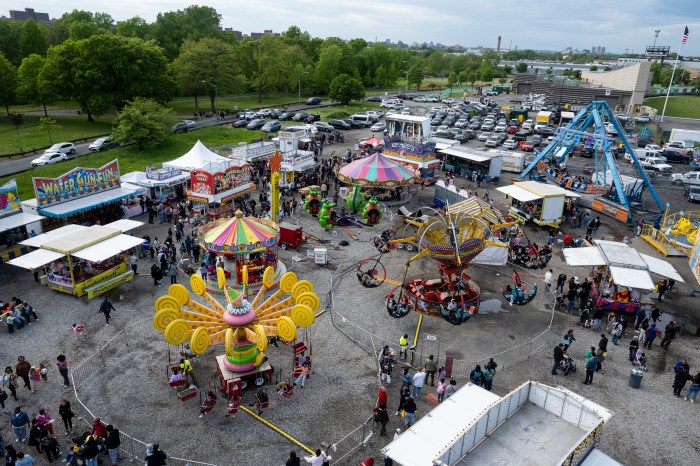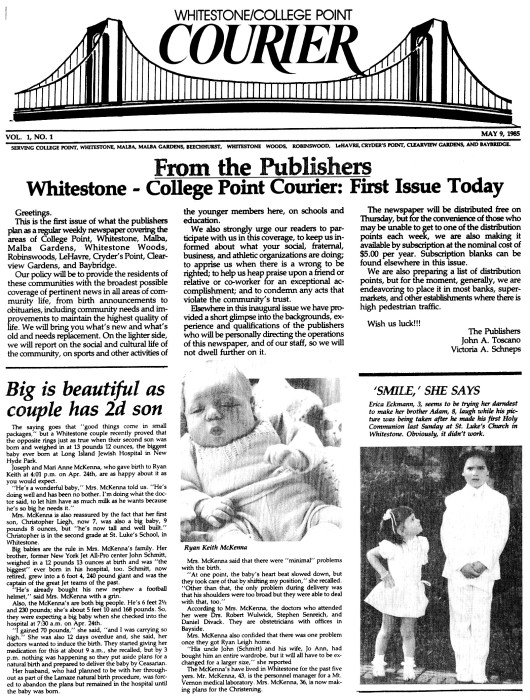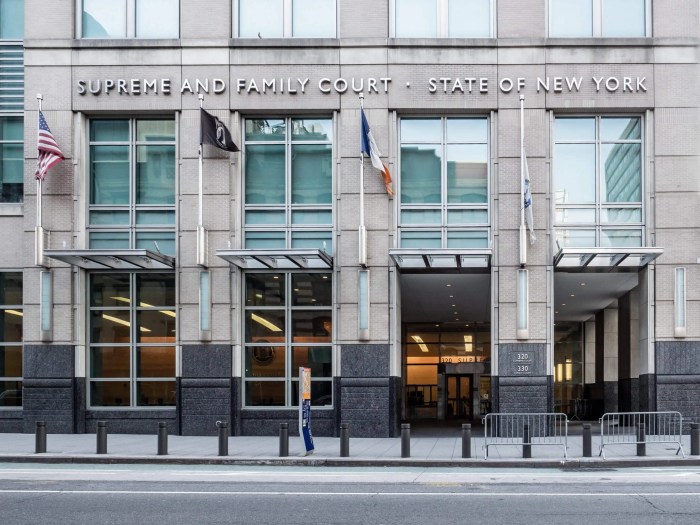By Julie Shapiro
The constant construction that has filled Downtown for the past few years isn’t going anywhere anytime soon — and neither is the Lower Manhattan Construction Command Center.
The L.M.C.C.C. is scheduled to sunset at the end of this year but will likely stay open longer. The agency has enough money in the bank to keep going at least one extra year, until the end of 2011, said Bob Harvey, acting executive director of the city-state agency. Any extension past the end of 2010 requires the signoff of the governor and mayor, and Harvey said he had a “positive discussion” about the agency’s future with city and state representatives on Wednesday.
“We’re hopeful based on the meeting today,” Harvey told Downtown Express afterward.
The L.M.triple-C, as the agency is known, was created in 2004 to manage the $20 billion of public and private construction slated for the area below Canal St. The agency coordinates large projects by holding stakeholder meetings and doing independent studies, and also monitors quality-of-life and environmental impacts.
“We need L.M.C.C.C. to continue as long as there are so many uncompleted construction projects downtown, especially at the World Trade Center,” said Catherine McVay Hughes, chairperson of Community Board 1’s W.T.C. Redevelopment Committee. “It would be impossible to live or work Downtown without the L.M.C.C.C…. It would be gridlock all the time.”
Hughes credited the construction command center with keeping Vesey St. open to pedestrians adjacent to the W.T.C. site and with coordinating concrete pours to keep traffic flowing on Lower Manhattan’s narrow streets. The L.M.C.C.C.’s analysis also informed the Port Authority’s revised schedule for the World Trade Center in 2008.
The future of the L.M.C.C.C. is intimately connected to its parent agency, the Lower Manhattan Development Corp. The question of both agencies’ future came up recently because the lease at their One Liberty Plaza offices expired in February. The L.M.D.C. authorized extending the lease for up to two years at a board meeting last Thursday, though L.M.D.C. President David Emil said he thought the development corporation would only need so much space for about 18 months.
“Obviously the L.M.D.C. can’t and shouldn’t go on forever but we do have the responsibility of making sure the federal funds we are overseeing are properly spent,” Emil said at Thursday’s board meeting. He thinks the financial oversight function could continue in a smaller office and would not take as long as five years to complete.
Mayor Mike Bloomberg has frequently and vehemently called for the L.M.D.C. to be closed as soon as possible and for its functions to be transferred to the city and the construction command center.
The L.M.D.C.’s biggest project is the demolition of the Deutsche Bank building at 130 Liberty St. Cas Holloway, commissioner of the Dept. of Environmental Protection and a key city adviser on the Deutsche project, said he saw little reason for the L.M.D.C. to stay open after the building is down, but he thinks the L.M.C.C.C. will be needed for a few more years.
“L.M.triple-C is performing a vital coordination function for Downtown Manhattan,” Holloway told Downtown Express. “This isn’t just about 130 Liberty St. but all of the projects Downtown…The vision for the organization was that it would continue to play that role until we are further along [in the rebuilding].”
A spokesperson for Gov. Paterson said Wednesday that the governor was in discussions with the mayor’s office about the L.M.C.C.C. Emil, who was appointed by Paterson’s predecessor, said the construction command center would likely get extended.
The L.M.C.C.C. shares some legal and administrative staff with the L.M.D.C. but could exist independently after the L.M.D.C. closes, Harvey said.
The L.M.C.C.C. has reduced its budget each year since it opened and spent $17 million this year, which came from the federal government, the city, state agencies and the private sector. Extending the construction command center for more than one additional year would require many or all of those groups to add more cash, which could face opposition in tight budget times. If the L.M.D.C. has extra money left over when it sunsets, that could help fund the L.M.C.C.C. as well.
Harvey said the L.M.C.C.C. is well worth the public’s investment and estimated that the agency has saved over $300 million since 2004, by helping Downtown construction projects run efficiently.
Assembly Speaker Sheldon Silver and State Sen. Daniel Squadron, who represent Lower Manhattan, are both fighting for the L.M.C.C.C. to be extended. Downtown Alliance President Liz Berger and Community Board 1 support the extension as well. Many of the city and state agencies that work closely with the construction command center declined to comment.
Harvey would not say how much longer the L.M.C.C.C. should stay open, partly because the answer to that question is based on timelines of major construction projects, which are not set in stone.
“Let’s just keep them in place until this mess we live in called the World Trade Center area is complete,” said Pat Moore, who hosts L.M.C.C.C. representatives every month at the meetings of her C.B. 1 Quality of Life Committee. “As long as there is construction in this area, we need them to coordinate what’s going on.”
With reporting by Josh Rogers













